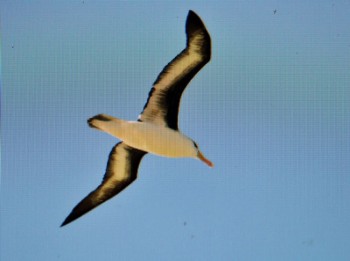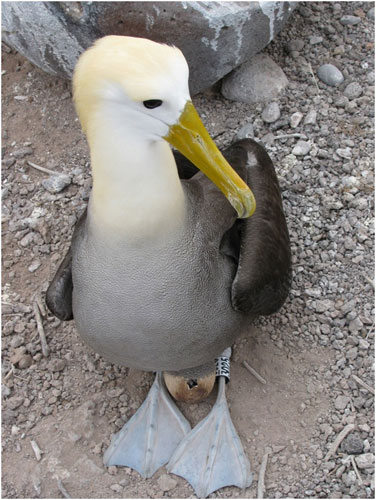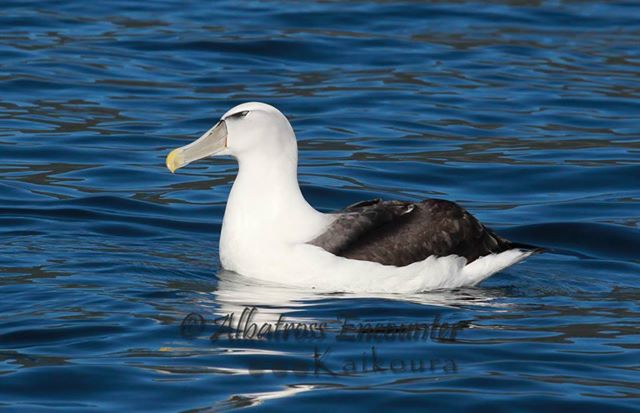On 24 December last year the Hawaiian Department Land and Natural Resources (DNLR) field crew on Kure Atoll in the USA’s North-western Hawaiian Islands photographed an immature Short-tailed Albatross Phoebastria albatrus (foreground in photograph below) visiting the nest site of the well-known female-female pair.
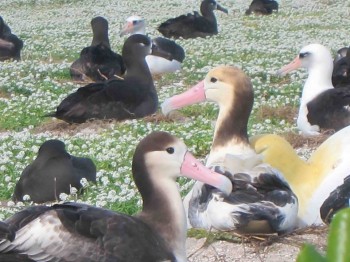
The partially-obscured golden-headed bird appears to be a decoy
This pair has been present on Kure since 2010 when observations began (click here). Two eggs are laid in the same nest each year but do not hatch. The resident albatross incubating on the nest (banded 13A-1456) in the photo is the youngest of the pair. She was banded in 2000 as a chick. Her female partner (banded 13A-0703), who was then away at sea foraging after taking the previous incubation shift, was banded in 1993. This is considered a promising sign that the six recently installed Short-tailed Albatross decoys may have played a role in attracting the new bird.
The Kure crew sighted a second new Short-tailed Albatross on the atoll on 10 January this year (below). The bird is an immature with predominantly brown plumage and a pink bill.

The Short-tailed Albatross below photographed in flight over the atoll is in an intermediate plumage and is one of the regular visitors to Kure.
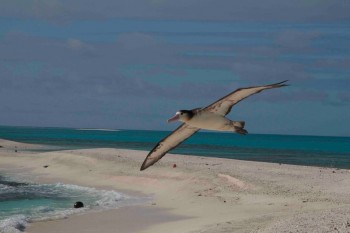
There are only six other records of individual Short-tailed Albatrosses on Kure, although some of these may be of resightings.
As for other albatross breeding sites in the Hawaiian Islands (click here), Kure Atoll is also having a bumper breeding season in 2014/15.
With acknowledgement to the Kure Atoll Conservancy Facebook Page for information and photographs.
John Cooper, ACAP Information Officer, 24 January 2015

 English
English  Français
Français  Español
Español 